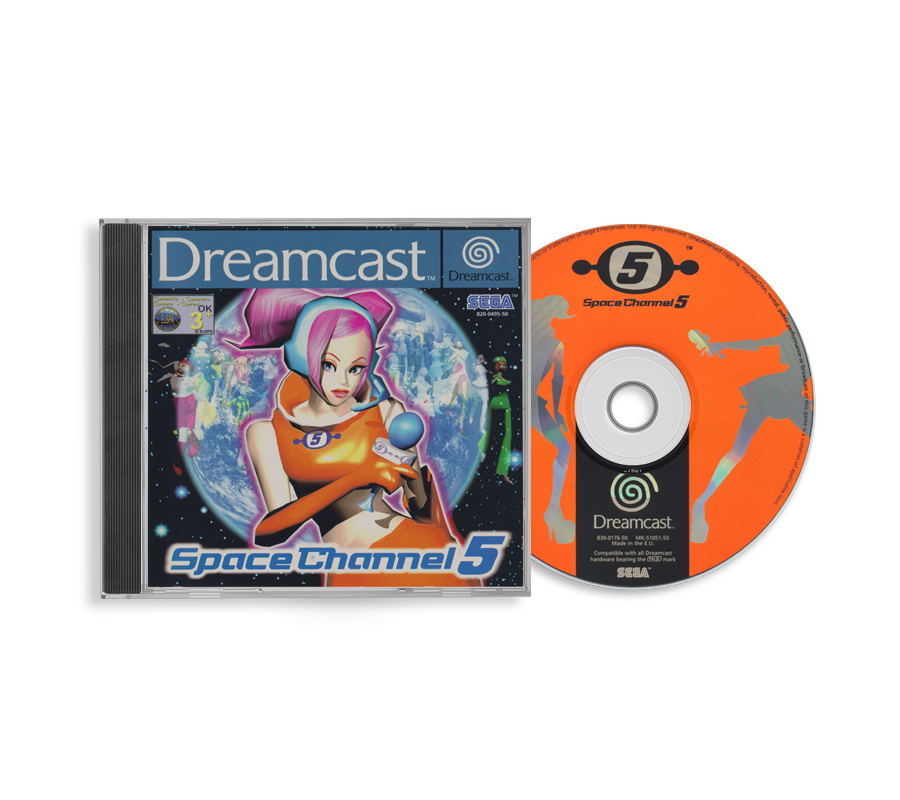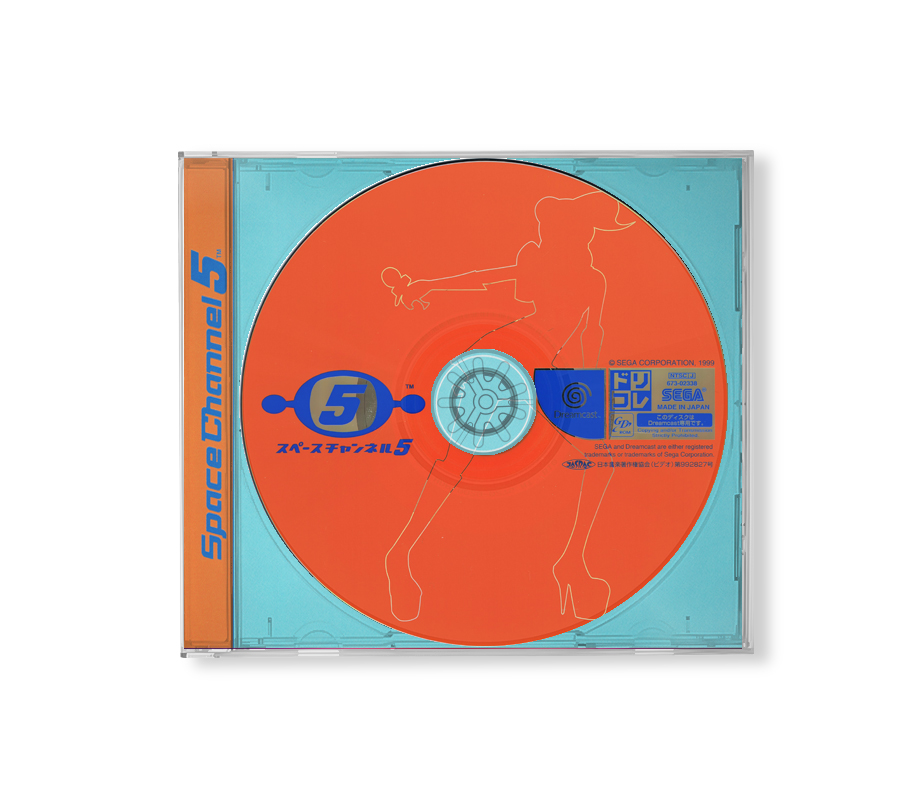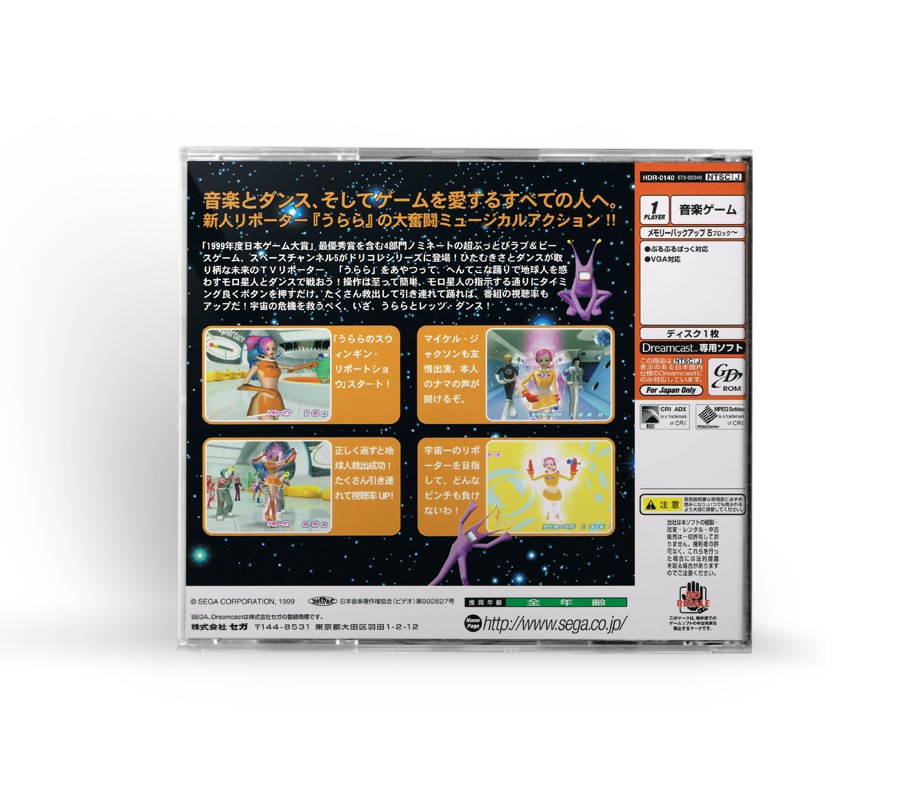Space Channel 5 is a music video game developed by United Game Artists and published by parent company Sega. Originally released for the Dreamcast (1999 in Japan, 2000 worldwide), it was later ported to the PlayStation 2 (2002 in Europe, 2003 in Japan and North America). A version for the Game Boy Advance (GBA) was published in 2003 as a Western exclusive. Following space-faring reporter Ulala as she investigates an alien invasion, players engage in rhythm-based combat where Ulala mimics the actions of rivals in time to musical tracks.
The game was conceived by Tetsuya Mizuguchi, who was told to create something aimed at a female audience. Production lasted two years, with a staff of around 20 that included company veterans and newcomers to game development. The music, composed by Naofumi Hataya and Kenichi Tokoi, drew inspiration from big band music. Ken Woodman‘s “Mexican Flyer” had informed the musical style and acted as the theme song. The overall style was influenced by culture from the 1950s and 1960s, and the later music videos of Peter Gabriel and Michael Jackson, the latter having a cameo appearance in the game.
While the game released to low sales, journalists gave the Dreamcast original generally positive reviews; praise focused on its music-central gameplay and artstyle, but faulted its short length and syncing issues with the graphics. The PS2 version met with similar praise, with many recommending it due to the low selling price. The GBA version, titled Ulala’s Cosmic Attack, saw lower scores due to technical shortcomings. A sequel, Space Channel 5: Part 2, released in 2002 in Japan and 2003 worldwide. There was a game released for virtual reality systems called Space Channel 5 VR: Kinda Funky News Flash!, produced by the original staff from Grounding Inc.
Story and gameplay
In the music video game Space Channel 5, players take on the role of Ulala, a reporter working for the titular news channel in a 1960s-styled science fiction future filled with competing news channels. When an alien race called the Morolians begin attacking, Ulala simultaneously reports on the events, fights off the threat, and clashes with rival reporters. The invasion is revealed to have been staged by Space Channel 5 boss Chief Blank to drive up ratings for the channel. With help from fellow reporters and support from her fans, Ulala defeats Blank.
Players control Ulala through four stages; real-time polygonal character models and visual effects move in synch to MPEG movies which form the level backgrounds. All gameplay has Ulala mimicking the movements and vocalisations of her opponents (compared by journalists to the game Simon Says). Actions are performed in time to music tracks playing in each section of a stage. There are six buttons that match actions on-screen; the directional pad buttons, and two action buttons (A and B on Dreamcast and Game Boy Advance (GBA), Cross and Circle on PlayStation 2) which are presented with the vocalization “chu”.
Levels are split between “dance” areas, and shooting areas. During dance sections, Ulala mimics actions and shouts of “chu” from enemies, with successful actions boosting a “Ratings” meter in the lower right corner of the screen. In combat, Ulala must shoot at and defeat enemies, and also rescue hostages with the other action button. After either a dance or combat section, Ulala is joined in her progress by the people she rescued. During boss battles, Ulala has a health meter represented on-screen as hearts; a heart is lost for each mistake. If Ulala makes too many mistakes and loses all hearts during boss battles, or fails to meet the minimum rating requirements or causes ratings to drop to zero by missing or failing actions, the player reaches a game over and must restart. The game features a new game plus option, where players can begin a new game using a completed save file. Depending on current rating, alternate routes are unlocked and new enemy patterns appear.
Development
The concept for Space Channel 5 originated when Tetsuya Mizuguchi—then known for his work on racing games—was contacted bySega to develop a game for the Dreamcast aimed at a female casual gaming demographic. Mizuguchi had no knowledge of such a demographic, so he personally interviewed several young girls to find their tastes in gaming. He discovered that, while male gamers trended towards games that allowed for ranking and high scores, women preferred straight puzzle games. Mizuguchi decided to create a game which would bring together both video game and music fans, using his personal experience with nightclub disco and music events such as Street Parade. He also drew inspiration from the art of Wassily Kandinsky, wanting to encourage a form ofsynesthesia within players. Other sources of inspiration were the music of the 1950s and 60s, and the music videos of Peter Gabrieland Michael Jackson that were showing on MTV during the 80s.
Production was handled by United Game Artists, known as Sega Production Department 9 until its rebranding in 2000; it was the newly formed division’s first project. The team included many staff from Team Andromeda (makers of Panzer Dragoon) and the Sonic the Hedgehog series, and more who were complete newcomers to game development. Development for the game lasted almost two years. Beginning with a small team of ten, it eventually expanded to 27 members as development progressed. Mizuguchi acted as the game’s producer, with Takashi Yuda both directing and providing the voice for supporting character Fuze. The game was Mizuguchi’s first time working on a game aimed exclusively at the home console market, as his earlier work had first been developed forarcade. Speaking about the Dreamcast, Mizuguchi said that it allowed higher-quality music compared to graphics-focused racing games. He wanted to use the new technology to incorporate interactivity into the score.
<small><a href=”https://en.wikipedia.org/wiki/Space_Channel_5” target=”_blank” rel=”noopener noreferrer”>https://en.wikipedia.org/wiki/Space_Channel_5</a></small>


















































Reviews
There are no reviews yet.